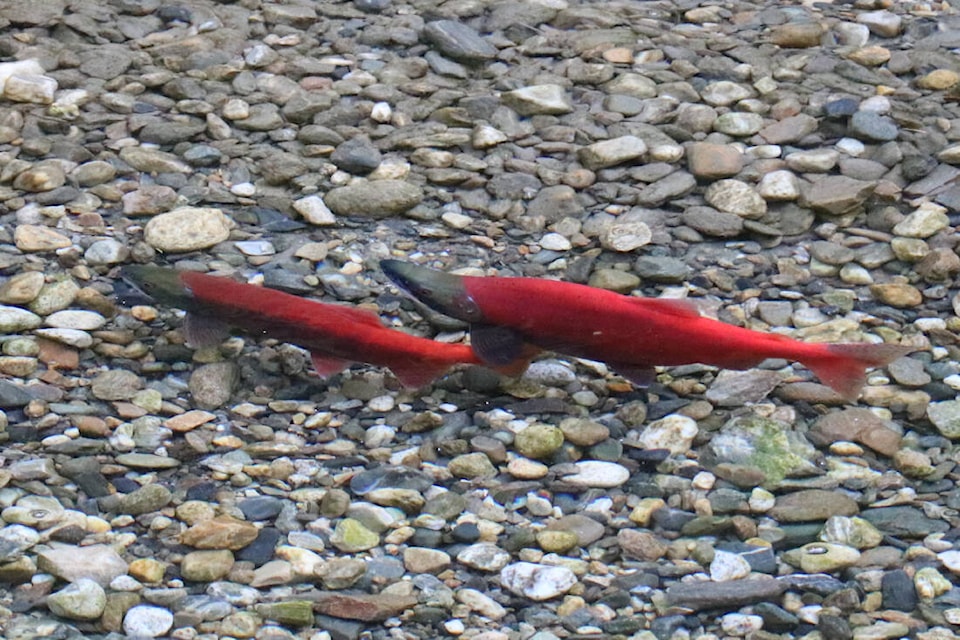by Timothy Schafer
Local Journalism Initiative Reporter, The Nelson Daily
The survival solution to the lagging kokanee species in Kootenay Lake won’t be simply solved by increasing the re-stock number of eggs, says a provincial aquatic specialist.
Will Warnock with the B.C. Ministry of Forests, Lands and Natural Resources said re-stocking of a collapsed fish species like the kokanee is very necessary in keeping them strong, but it always depends on how many “spawners” there are in the spawning channels.
When kokanee are not abundant in the wild, he said March 14, stocking is an important lever if the number of spawners drops under 65,000.
And with kokanee predicted to sink under that mark in 2022 — and the species mired in a “predator pit” that encourages over predation — the province will have to step up and deliver, Warnock explained, but only to buy some time for the species to recover.
“You can never drag kokanee out of the predator pit and solve this problem by stocking alone,” he stated. “Stocking is a useful complementary action, but has not triggered fishery recovery alone in any similar predator pit example we are aware of.”
This fall the province plans to infuse the Meadow Creek spawning channels with around five million eggs. In 2021 the province put 1.1 million eggs into the spawning channels, and since 2015 it has placed over 24 million eggs and around one million fry in the lake.
Although egg to fall fry survival has been excellent, the bottleneck in kokanee survival is primarily from age zero to one and remains unchanged since around 2012, said Tyler Weir, a provincial large lake ecosystem specialist with the ministry.
“An acoustic survey suggests that, in 2022, the fall of 2022 we are likely to see around 60,000 spawners,” he said. “That’s up from the return in 2021, which was very low, but … it’s well below the pre-collapse period.”
READ MORE: Kokanee population ‘collapsed’ in Kootenay Lake but unlikely to disappear
Tale of the fish
The real recovery for the kokanee in Kootenay Lake won’t be through one action, said ministry fisheries biologist Molly Teather, but through a series of planned and continuing Kootenay Lake actions.
She said the proposed 2022-2023 Kootenay Lake Angler Incentive Program is expected to return with an increased grand prize value and changes for better participation, including removing the daily limit of two rainbow trout over 50 centimetres, reverting instead to daily regional quotas of five rainbow trout per day of any size.
“Year one of the program was very successful,” she said.
The plan will also be to reduce Gerrard trout spawners to a target of 50 to 100 spawners, with bull trout reductions reducing the Kaslo River fish to 50 spawners.
Over 10,000 fish (10,689) were entered in 2020-21, for a total 14,000, including non-incentive program harvest. The Kootenay Lake rainbow trout total harvest almost doubled, owing to increases in effort (81 per cent) and some increase in harvest (19 per cent).
Other recovery actions include the Kootenay Lake Nutrient Restoration program continuing to supplement nutrients lost to upstream dams and provide food for fish.
“This allows kokanee to grow faster, to a size they are no longer vulnerable to predators and have a higher survival rate,” said Teather. “It allows female kokanee to grow more eggs.”
She said eggs produced per female are now about three times what kokanee used to produce before the collapse.
